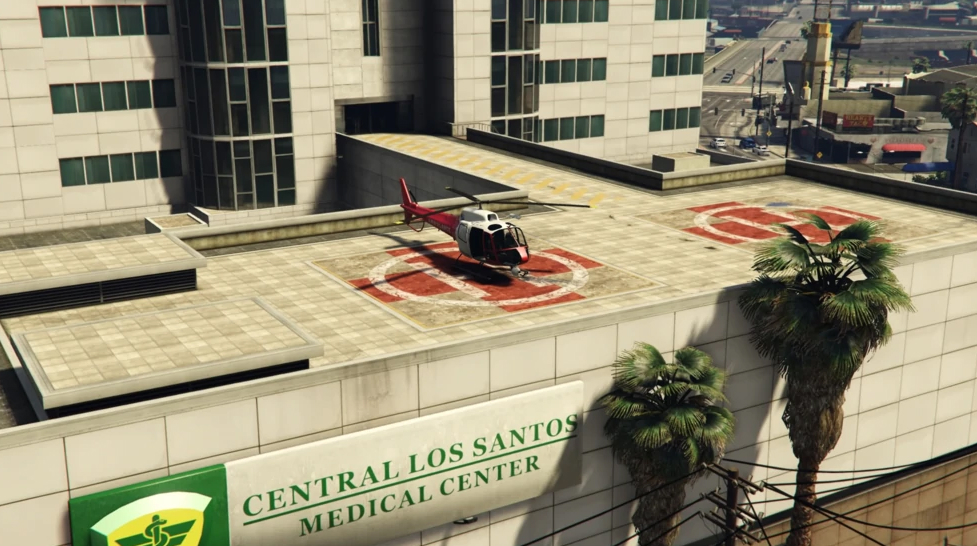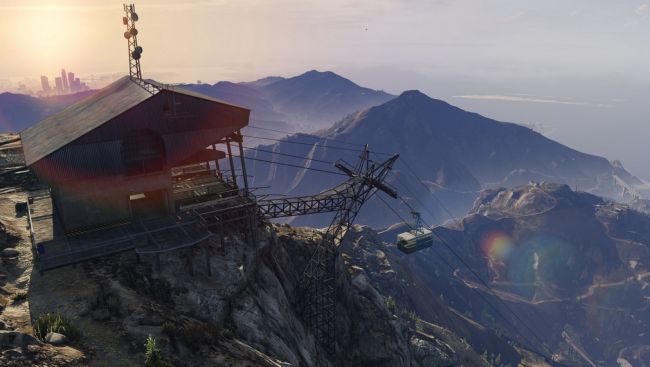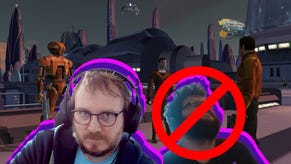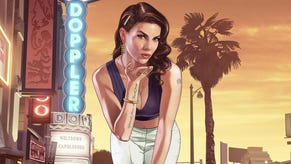I learned a valuable lesson about my uncle's suicide in GTA 5 roleplay
Warning: the following article discusses sensitive themes such as depression and suicide. The names of the players within have been changed.
I’m standing on the corner of Innocence Boulevard and Crusade Road, east of Strawberry. Before me stands the Central Los Santos Medical Center and, atop one of the hospital’s front-facing helipads, is a man threatening to jump. In the three or so years I’ve spent mucking around in Grand Theft Auto 5’s unofficial player-made roleplay servers, this is the first time I’ve encountered a scenario of this nature.
As I approach the pavement closest to the building’s edge, the man tells me I’ve come close enough. Yelling down, he tells me that if I make for the ladder at the far side of the car park, or if I call the in-game emergency services, another civilian, or post anything on Bleeter – GTA 5’s slant on Twitter, which doubles as this server’s public IM text chat – he’ll throw himself from the ledge. I tell the man that I pose no threat, and that I’m simply curious as to why he’s got himself so worked up.
“Take it easy, mate,” I say. “What’s your name?”
“Shaun,” he replies. “I’m just f**king fed up. I don’t know what else to do.”
Shaun explains that his late friend, who’d struggled with mental health issues, slipped from a station platform into the path of an oncoming train. He says that while he’s unsure of the authorities’ findings, the police have since determined his mate’s passing as suicide. Shaun says his friend, Steve, was like any other guy in his early 20s – a great laugh, into sports – and had just landed an electrician’s apprenticeship with a respected local firm. He was smart, had a lovely girlfriend and, in Shaun’s eyes, had everything going for him. Shaun says Steve’s parents are expectedly distraught, and his friends are struggling to cope.
In a game otherwise associated with crude, over the top, law-breaking hedonism, the GTA 5 roleplay scene offers a nuanced take on the sandbox crime simulator’s vanilla state. Its myriad modded servers let players live virtual lives closer to reality, which in turn creates scope for the very real scenario painted by Shaun. That’s not to say Shaun himself isn’t roleplaying a make-believe tale – RP server rules encourage players to craft and commit to credible and meticulous backstories – but the situation he describes appears heartfelt and sincere.
Away from stealing cars, running drugs and offing unscrupulous mobsters, I once happened upon a group of roleplayers who use San Andreas as a safe space to cope with grief, gambling, and addiction. But this is the first time I’ve encountered such a personal conversation one-on-one.
I tell Shaun that in 2008 my uncle took his own life, and that my family and I also struggled to balance grief with the inevitable uncertainty and ‘what ifs’ that followed. Shaun tells me he totally gets that, and recently lost his head with one mate for suggesting Steve had taken the ‘coward’s way out’. He says that while he’s insightful enough himself to realise his pal is probably still in shock, they all are, this stigma-driven attitude upsets him.
I tell Shaun that I know exactly where he’s coming from, and that he’s right, everyone deals with things differently and quite often people say things out of turn that they don’t necessarily mean, or, worse, understand. I tell Shaun that my own bugbear is when people say ‘X person didn’t seem like the type that’d kill themselves’, because rarely does anyone who follows through with taking their own life seem so lost or desperate. Well-intentioned as the sentiment is, it gets my back up. I then explain to Shaun that I’m certain had my uncle been able to open up about how he was feeling, he’d still be with us today. That said, I’m equally sure that there was nothing anyone could have done beforehand, and that my uncle Jim’s passing was no one’s fault – not his own, nor our family’s.
I tell Shaun that being able to resolve these distinctly jarring points in my head took such a long time, and that while I can’t speak for Steve, or anyone else for that matter, I am of the view this dichotomy is one of the few universal truths of suicide.
A long silence follows, broken momentarily by far-off sirens and echoing gunshots. It’s easy to forget we’re having this conversation within Grand Theft Auto 5’s Los Santos, a city that never sleeps.
“I’m going to come up the ladder,” I eventually say. Shaun stays silent. I hop the hedge that runs the length of the complex, dart across the car park and climb up the side of the building.
My avatar approaches Shaun’s, and I ask if he’s okay. He says yes. At this point, if this were real-life, I reckon we might hug, shake hands, or at least high five. Instead, my avatar points at Shaun’s. He points back, then raises his hands above his head in a ‘don’t shoot’-type pose. I do the same, and then Shaun drops into a prone position and then immediately jumps back to his feet. The limitations of the server’s emote systems brings welcomed levity to what’s come before. I laugh. Shaun laughs. And then I about turn, and make my way back down to street-level. Shaun follows, we exchange brief goodbyes, and then set off in opposite directions.
On my way back to Legion Square, the server’s de-facto meeting point, I can’t help but compare my encounter with Shaun to my own experience with suicide. Again, I can’t say for sure if Shaun was for real, but I’ve no reason to believe he wasn’t. Had he decided to jump from atop the Central Los Santos Medical Centre, the only in-game consequence he’d have suffered would have been an eight-minute incapacitation penalty, before respawning at the front door of the very same hospital building.
Still, talking through his story made me realise, or perhaps reaffirm, two things: talking helps; and everyone’s situation is different. In real-life, Shaun clearly has more grieving, processing, and, hopefully, talking and sharing ahead of him as he comes to terms with his loss. Doing so in reality is not always straightforward – I myself once tried and failed to engage with cognitive behavioural therapy – which makes in-game encounters like these all the more powerful.
Shaun and my conversation, albeit in-game, put me in the shoes of the listener – something which I wish so, so much I could have been for my uncle Jim. And yet, it changes nothing. No one is to blame, and Jim clearly wasn’t ready or able to open up about his darkest feelings. Ultimately, suicide is such a specific, idiosyncratic thing, even if parallels can be drawn between the victims and their families in the wake of each devastating act.
With all of this said, Grand Theft Auto 5 – a six-year-old video game rooted in violent virtual crime – is hardly the place you’d expect profound and poignant moments like this to occur. When my uncle took his own life over 11 years ago, I sought escapism in video games more than ever before. I’ve since spent several-hundred hours combing this particular crime sim’s urban, suburban and rural sprawl, and yet I’m still blown away by touching instances like the one I experienced with Shaun. Again, CBT didn’t work for me when my mental health dipped in real-life, but these exchanges, inside virtual worlds and within a safe framework, are invaluable – to myself, to Shaun, and to anyone else who has something to share.
If you’ve been affected by the themes in this article, you may find the following phone numbers helpful:
- US National Suicide Prevention Line: 1-800-273-8255 FREE
- UK Samaritans: 08457 909090













